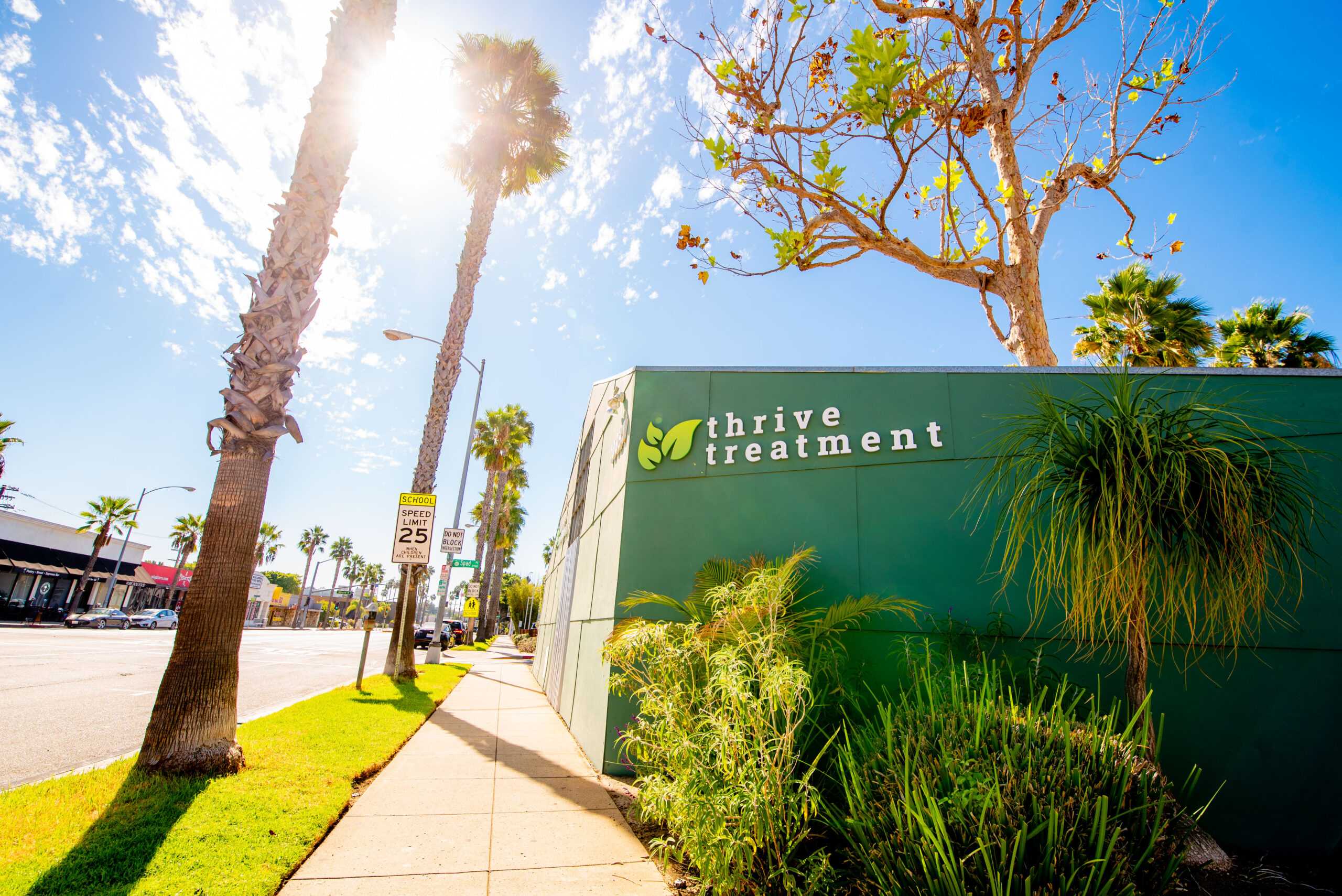The Relevance of Nutrition in Substance Use Disorder Treatment
by David A. Wiss, MS RDN
Why is Nutrition Relevant to Substance Use Disorders?
The recent opioid crisis and increased insurance coverage for rehabilitation services has created a surge in individuals seeking treatment. Registered Dietitian Nutritionists (RDN) are increasingly finding employment in Substance Use Disorder (SUD) treatment facilities nationwide. What kind of evidence do we have to guide us in our nutrition assessment and intervention plan? Due to ethical limitations in conducting prospective studies with illicit substances, there is a shortage of high quality data. Retrospective human studies have demonstrated protein and calorie malnutrition,1 compromised immune status,2 micronutrient deficiencies,3 and antioxidant disturbances.4 Specifically, antioxidant vitamins E, C, and A are lower than controls,5 iron is decreased6 while copper and zinc are increased, indicative of inflammation.7 Detailed summaries of nutrient deficiencies associated with specific substances have been described elsewhere.8,9
Lowered antioxidant response and increased inflammatory processes may increase the potential for the development of chronic disease. One example is the metabolic syndrome, which is characterized by impaired glucose metabolism, abdominal obesity, dyslipidemia, and hypertension.10,11 In one large US adult population study, cocaine use has been associated with elevated blood pressure.12 Other authors have suggested that diabetes counseling include interventions to interrupt drug abuse.13 With growing rates of addiction, the connection between SUD and nutrition-related chronic disease requires further study. Specifically, can nutrition interventions improve mental health outcomes?
Dietary recall studies have indicated that people who abuse substances have low intake of fruits and vegetables and high intakes of low fiber sugar-sweetened foods and beverages.14,15 Individuals with SUDs typically have lower BMIs while using6 and gain weight during treatment.16 Excessive weight gain during recovery has been described in adolescents,17 men,18 and women,19,20 all of which have been associated with eating disorder (ED) symptomatology. Several studies have shown significant overlap between SUDs and EDs, with estimated comorbidity ranging from 3-50%.21,22 Studies to date have not differentiated between the temporal sequence of co-occurring SUDs and EDs. In other words, does dysfunctional eating emerge once abstinence has been achieved, or was it present before the alcohol or drug use began? The role of societal and social pressures (e.g. appearance-related or otherwise) in early SUD recovery may also contribute to the development or reoccurrence of ED symptoms. In the SUD population, loss-of-control eating associated with binge eating disorder and bulimia nervosa is more common than anorexia nervosa restrictive-type.23 Recently several authors have recommended integrated treatment for SUD and ED rather than separate sequential treatments.21,24,25 There is an urgent need for more research on the role of the RDN in SUD treatment in order to substantiate insurance coverage for these services.
How is the Microbiome Related to Substance Use Disorders?
An emerging area of investigation in the field of “nutritional psychiatry” is the link between the gut microbiome and the brain. Recent research has established connections between gastrointestinal microorganisms and mental health which has been referred to as the “gut-brain axis.”26 Known communication pathways include microbial production of short chain fatty acids in the colon,27 production of neurotransmitters (dopamine and serotonin) in the intestines, the vagus nerve and the hypothalamic-pituitary-adrenal axis.28 Some authors have proposed that targeting the “crosstalk” between microbes and the central nervous system may have implications for anxiety and depression26 as well as drug addiction.29 Alcohol-dependent patients with gut “leakiness” and associated inflammation had higher measures of depression and alcohol craving.30 Another study showed that the depression, anxiety, and craving associated with compromised gut permeability was persistent after 3 weeks of sobriety.31 Data from rodent models suggests opioid-induced alteration of gut microbiota32-34 that are likely to persist into abstinence. Similar perturbations have been described with cocaine35 and methamphetamine.36,37 More research is needed on the connection between the microbiome and SUD, but it appears to be an important link in physiological recovery, providing strong theoretical support for nutritional interventions in early abstinence.
Emerging data on the microbiome presents compelling evidence why nutrition is important to the recovery process. Food service operations should cater to the clinical needs of the patients, rather than simply provide “comfort food.” Chronic low-fiber diets degrade the intestinal barrier, enhance pathogen susceptibility and promote inflammation.38 Western diets contribute to gut dysbiosis39,40 which may have important implications for dietary interventions during SUD recovery, both over the short (e.g. weeks, months) and longer-term (years). Clinical anecdote suggests that discussion of the gut-brain connection in SUD treatment settings has helped patients to connect nutrition to their recovery and subsequently become proactive in seeking dietary improvement. Recommendations for group topics in SUD treatment have been made elsewhere.41
Recommendations
It appears that group facilitation can be covered by insurance as part of the overall treatment plan. Sadly, the author once encountered a situation where a medical biller (negotiating with insurance companies) recommended changing the group name from “Nutrition in Recovery” to “Self-Care in Recovery” for easier reimbursement (California). Because reimbursement is not yet established, RDNs should continue to advocate for individual counseling in addition to group facilitation and involvement in the food service operation. A qualified RDN can help screen for EDs, as well as promote long-term healing and nutrition self-efficacy. Do not be afraid to collect data and publish your findings! We need the data to move the field ahead.
David A. Wiss, MS RDN
Nutrition in Recovery, Los Angeles, CA
davidawiss@nutritioninrecovery.com
References
- Santolaria-Fernandez FJ, Gomez-Sirvent JL, Gonzalez-Reimers CE, et al. Nutritional assessment of drug addicts. Drug Alcohol Depend. 1995;38(1):11-18.
- Mannan SJ, Azad MA, Ullah A, et al. Investigation of serum trace element, malondialdehyde and immune status in drug abuser patients undergoing detoxification. Biol Trace Elem Res. 2011;140(3):272-283.
- Ross LJ, Wilson M, Banks M, Rezannah F, Daglish M. Prevalence of malnutrition and nutritional risk factors in patients undergoing alcohol and drug treatment. Nutrition. 2012;28(7-8):738-743.
- Gawad SSAE, Hassan SA, Ghanem AEA, Awad ME, Ali RF. Effects of drug addiction on antioxidant vitamins and nitric oxide levels. J Basic Appl Sci Res. 2010;1(6):485-491.
- Islam SKN, Hossain KJ, Ahsan M. Serum vitamin E, C and A status of the drug addcits undergoing detoxification: influence of drug habit, sexual practice and lifestyle factors. Eur J Clin Nutr. 2001;55:1022-1027.
- Nazrul Islam SK, Jahangir Hossain K, Ahmed A, Ahsan M. Nutritional status of drug addicts undergoing detoxification: prevalence of malnutrition and influence of illicit drugs and lifestyle. Br J Nutr. 2002;88(5):507-513.
- Hossain KJ, Kamal MM, Ahsan M, Islam SK. Serum antioxidant micromineral (Cu, Zn, Fe) status of drug dependent subjects: Influence of illicit drugs and lifestyle. Subst Abuse Treat Prev Policy. 2007;2:12.
- Jeynes KD, Gibson EL. The importance of nutrition in aiding recovery from substance use disorders: A review. Drug Alcohol Depend. 2017;179:229-239.
- Wiss DA, Waterhous TS. Nutrition Therapy for Eating Disorders, Substance Use Disorders, and Addictions. 2014:509-532.
- Virmani A, Binienda Z, Ali S, Gaetani F. Links between nutrition, drug abuse, and the metabolic syndrome. Ann N Y Acad Sci. 2006;1074:303-314.
- Virmani A, Binienda ZK, Ali SF, Gaetani F. Metabolic syndrome in drug abuse. Ann N Y Acad Sci. 2007;1122:50-68.
- Akkina SK, Ricardo AC, Patel A, et al. Illicit drug use, hypertension, and chronic kidney disease in the US adult population. Translation Research. 2012;160(6):391-398.
- Balhara YPS, Kalra S. Drug addiction and diabetes: South Asian action. Recent Advances in Endocrinology. 2017;67(6):954-956.
- Baptiste F. Drugs and diet among women street sex workers and injection drugs user in Quebec City. Can J Urban Res. 2009;18(2):78-95.
- Saeland M, Haugen M, Eriksen FL, et al. High sugar consumption and poor nutrient intake among drug addicts in Oslo, Norway. Br J Nutr. 2011;105(4):618-624.
- Edge PJ, Gold MS. Drug withdrawal and hyperphagia: lessons from tobacco and other drugs. Curr Pharm Des. 2011;17(12):1173-1179.
- Hodgkins C, Frost-Pineda K, Gold MS. Weight gain during substance abuse treatment: the dual problem of addiction and overeating in an adolescent population. J Addict Dis. 2007;26 Suppl 1:41-50.
- Cowan JA, Devine CM. Food, eating, and weight concerns of men in recovery from substance addiction. Appetite. 2008;50(1):33-42.
- Emerson M, Glovsky E, Amaro H, Nieves R. Unhealthy weight gain during treatment for alcohol and drug use in four residential programs for Latina and African American women. Subst Use Misuse. 2009;44(11):1553-1565.
- Warren CS, Lindsay AR, White EK, Claudat K, Velasquez SC. Weight-related concerns related to drug use for women in substance abuse treatment: prevalence and relationships with eating pathology. J Subst Abuse Treat. 2013;44(5):494-501.
- Bonfa F, Cabrini S, Avanzi M, Bettinardi O, Spotti R, Uber E. Treatment dropout in drug-addicted women: Are eating disorders implicated? Eat Weight Disord. 2008;13(2):81-86.
- Bulik CM, Slof M, Sullivan P. Comorbidity of eating disorders and substance-related disorders. Medical Psychiatry. 2004;27:317-348.
- Calero-Elvira A, Krug I, Davis K, Lopez C, Fernandez-Aranda F, Treasure J. Meta-analysis on drugs in people with eating disorders. Eur Eat Disord Rev. 2009;17(4):243-259.
- Ho V, Arbour S, Hambley JM. Eating Disorders and Addiction: Comparing eating disorder treatment outcomes among clients with and without comorbid substance use disorder. J Addict Nurs. 2011;22(3):130-137.
- Dennis AB, Pryor T, Brewerton TD. Integrated treatment principles and strategies for patients with eating disorders, substance use disorder, and addictions. In: Brewerton TD, Dennis AB, editors. Eating disorders, addictions and substance use disorders: research, clinical and treatment perspectives. Heidelberg: Springer; 2014:461-490.
- Rieder R, Wisniewski PJ, Alderman BL, Campbell SC. Microbes and mental health: A review. Brain Behav Immun. 2017;66:9-17.
- Vonk RJ, Reckman G. Progress in the biology and analysis of short chain fatty acids. J Physiol. 2017;595(2):419-420.
- Keightley PC, Koloski NA, Talley NJ. Pathways in gut-brain communication: evidence for distinct gut-to-brain and brain-to-gut syndromes. Aust N Z J Psychiatry. 2015;49(3):207-214.
- Skosnik PD, Cortes-Briones JA. Targeting the ecology within: The role of the gut-brain axis and human microbiota in drug addiction. Med Hypotheses. 2016;93:77-80.
- Leclercq S, Cani PD, Neyrinck AM, et al. Role of intestinal permeability and inflammation in the biological and behavioral control of alcohol-dependent subjects. Brain Behav Immun. 2012;26(6):911-918.
- Leclercq S, Matamoros S, Cani PD, et al. Intestinal permeability, gut-bacterial dysbiosis, and behavioral markers of alcohol-dependence severity. Proc Natl Acad Sci U S A. 2014;111(42):E4485-4493.
- Babrowski T, Holbrook C, Moss J, et al. Pseudomonas aeruginosa virulence expression is directly activated by morphine and is capable of causing lethal gut-derived sepsis in mice during chronic morphine administration. Ann Surg. 2012;255(2):386-393.
- Meng J, Yu H, Ma J, et al. Morphine induces bacterial translocation in mice by compromising intestinal barrier function in a TLR-dependent manner. PLoS One. 2013;8(1):e54040.
- Wang F. Temporal modulation of gut microbiome and metabolome by morphine. Dissertation. University of Minnesota; 2015.
- Volpe GE, Ward H, Mwamburi M, et al. Associations of cocaine use and HIV infection with the intestinal microbiota, microbial translocation, and inflammation. J Stud Alcohol Drugs. 2014;75(2):347-357.
- Bennet BL, Ma J, Roy S. Effect of methamphetamine on the gut epithelial barrier function. Paper presented at: Showcase of Undergraduate Research and Creative Endeavors 2016; Winthrop University.
- Ning T, Gong X, Xie L, Ma B. Gut microbiota analysis in rats with methamphetamine-induced conditioned place preference. bioRxiv. 2017.
- Desai MS, Seekatz AM, Koropatkin NM, et al. A dietary fiber-deprived gut microbiota degrades the colonic mucus barrier and enhances pathogen susceptibility. Cell. 2016;167(5):1339-1353 e1321.
- Rodriguez-Castano GP, Caro-Quintero A, Reyes A, Lizcano F. Advances in gut microbiome research, opening new strategies to cope with a western lifestyle. Front Genet. 2016;7:224.
- Singh RK, Chang HW, Yan D, et al. Influence of diet on the gut microbiome and implications for human health. J Transl Med. 2017;15(1):73.
- Wiss DA, Schellenberger M, Prelip ML. Registered dietitian nutritionists in substance use disorder treatment centers. J Acad Nutr Diet. 2018;118(12):2217-2221.
doi: 10.1016/j.jand.2017.08.113




